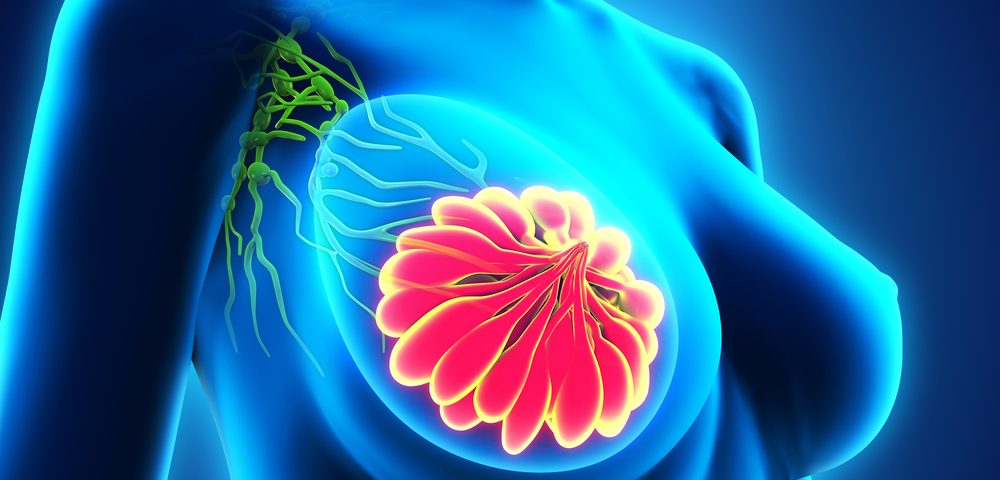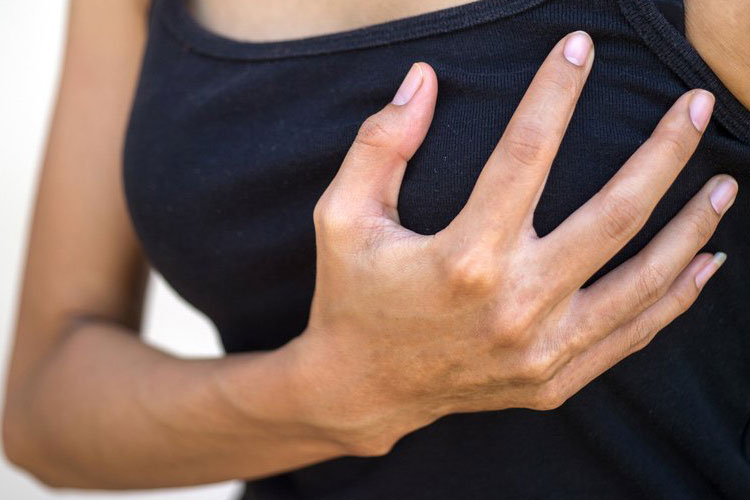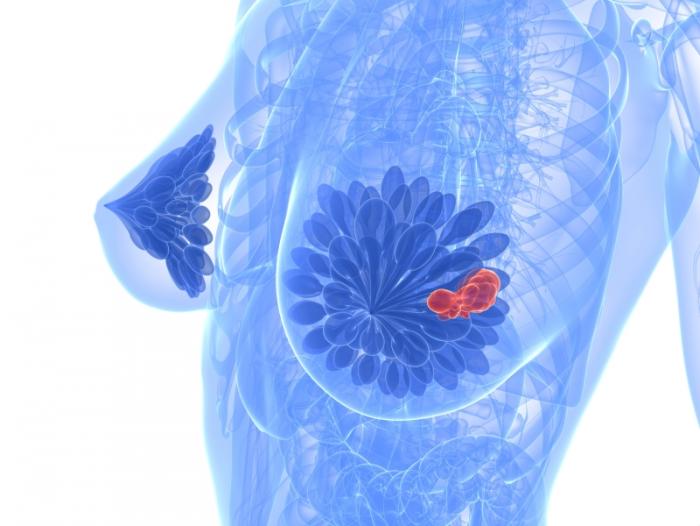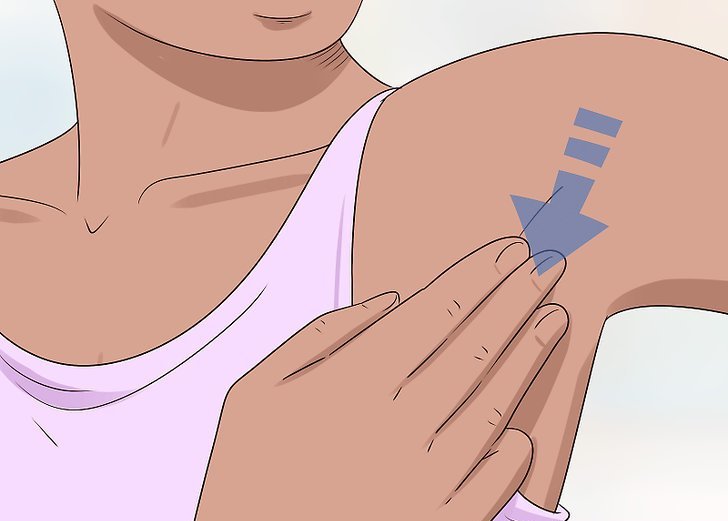Breast nodule - what is it? These are abnormal neoplasms of different sizes, textures, shapes and localization, which can indicate the development of a disease or serious malfunctions in the body. The appearance of such nodules in the chest should be cause for concern and a visit to the doctor. First of all, it is important to understand why this neoplasm appeared and immediately begin to eliminate the problem.
Breast nodular formation: what is it
The formation of such neoplasms may be associated with various pathologies of the breast or normal physiological changes. The condition of the mammary glands actually depends on several significant factors: psychological health, genetic characteristics, the work of the endocrine, digestive and genitourinary systems.

The main reason for any changes in breast tissue is a hormonal change. The hormonal background can change both for natural reasons - due to the menstrual cycle or age, and due to pathological processes in the body. In the life of every woman, there are stages when nodes in the chest can be considered a variant of the norm. But it often happens that tumors require mandatory therapy.
In general, if a knot in the chest is formed for natural reasons, treatment is not necessary in this case - the condition of the mammary glands will gradually return to normal. But if seals occur for no apparent reason, it is very important to pay attention to a dangerous symptom in time and start appropriate therapy.
What are the differences between nodes and seals in the chest? According to mammologists, none. A nodule can also be felt like a seal. And the reasons for the appearance of both those and other neoplasms are the same.
Nodules as a variant of the norm
The mammary glands are closely related to the work of the reproductive organs. That is why all the changes occurring in the reproductive system, sooner or later affect the state of the chest.
In some cases, discomfort, mild pain, nodules and seals can be considered normal:
- during the period of bearing a child;
- during puberty;
- at the stage of menopause;
- with breastfeeding.
During puberty, nodules can occur before each menstruation. This is due to the formation of a certain hormonal background. At this time, the body is undergoing many serious changes that will certainly affect the condition of the breast. In some girls, such symptoms remain even after puberty, complementing a number of premenstrual phenomena.

During lactation and pregnancy, increased production of female sex hormones is noted. Too much prolactin and estrogen leads to many symptoms, including pain, swelling of the mammary glands and the appearance of strange nodules in them.
During menopause, every woman is faced with serious hormonal disorders that can provoke the development of pathological nodules in the chest. In this case, the neoplasms disappear on their own, without any therapy.
Pathological causes
In addition to natural factors, other conditions affect the occurrence of nodes in the chest. Doctors most often distinguish several of the most common diseases that lead to the appearance of such a symptom:
- Benign neoplasms - lipomas, cysts, fibroadenomas.
- Gynecological defects - inflammation, adnexitis, polyps, endometriosis, ovarian cysts.
- Fibrocystic mastopathy is the most common female breast disease.
- Endocrine abnormalities - goiter, hyperthyroidism, pathology in the activity of the adrenal gland, pituitary gland or hypothalamus.
- Abscess, mastitis and other inflammatory and infectious diseases.
- Thrombophlebitis - most often develops due to a general or local bacterial infection.
- Malignant tumors.
- Lesions of the urethra, narrowing or papillomas.
- Complications after surgery.
- The consequences of damage to the chest.

All these pathologies differ among themselves by the features of the course and clinical manifestations.
Signs of mastopathy
This common disease is characterized by many different symptoms, including a node in the chest. Today, this disease is easily treatable.
Here are a few other signs that help you identify the problem in time:
- aching sensations in the chest, a feeling of fullness, intensifying before menstruation;
- pain radiating to the armpit, shoulder, or arm;
- swollen lymph nodes in the chest;
- abnormal retraction or cracks in the nipple;
- discharge from the ducts.

True, this disease can occur for a long time without obvious symptoms. The disease itself is not dangerous, but treatment should be started as soon as possible. After all, fibrocystic mastopathy can lead to the development of a malignant tumor. According to statistics, such a pathology transition occurs in approximately 70% of all cases.
Symptoms of Fibroadenoma
Usually the disease manifests itself in the form of nodules, causing slight soreness. Seals are round in shape, practically do not hurt, are not associated with the skin and nearby tissues. Over time, such nodules do not disappear and do not increase in size.
In women, most often there are no pronounced symptoms of the disease. But in men, the disease is accompanied by lower back pain and sexual dysfunctions.

Fibroadenoma is a benign neoplasm that is usually removed in a minimally invasive way.
Cyst symptoms
Separate neoplasms can occur for various reasons. A node in the chest can be a consequence of inflammation of the reproductive organs, gynecological and endocrine pathologies, an unstable emotional state. Cysts do not carry a danger and are always removed surgically.
Such neoplasms are minor seals that are not soldered to the skin and tissues. It does not cause pain on palpation.
Lactostasis
Nodules in the mammary gland can occur due to stagnation of milk. In fact, these are cysts filled with milk, which was simply not expressed in time. This formation is called lactocele. It is pierced or surgically removed.
With appropriate therapy, lactocele and lactostasis are completely harmless to the body. Only one thing is important - in time to find the cause of the seals and eliminate it, otherwise, the nodules will return.
Symptoms of mastitis
What it is? Mastitis is an inflammation of the mammary gland that is triggered by bacterial, sometimes microbial, microflora. If you ignore the signs of inflammation and do not treat it, an abscess may arise, which will have to be removed surgically.
Symptoms of mastitis:
- breast swelling;
- redness of the skin;
- increase in body temperature;
- soreness;
- general malaise;
- severe weakness;
- migraines are not excluded.
Treatment can be medication using antibiotics or surgical.
Benign neoplasms
Usually, such tumors do not cause the development of specific symptoms. Benign seals are located under the skin, are easily palpated and do not lead to pain, even with palpation. Such tumors can easily be detected even independently by examination of the mammary glands and thorough palpation.
The treatment of benign neoplasms can be conservative or surgical, depending on the type and size of the nodules. An important role in the choice of treatment tactics is also played by the risk of a tumor becoming malignant.
Malignant neoplasms
Such seals in the chest are much more dangerous than all other pathologies. That is why it is so important to know the main signs of oncology: dense, deeply located nodes of irregular shape with a tuberous surface. Other symptoms may be noted:
- itching
- redness of the chest;
- strong peeling;
- deformation of the nipples, their retraction or change in shape.
How to detect a problem
Of course, it is much better to systematically visit a mammologist for preventive examinations and, even more so, if you find any problems, such as nodules. Remember: breast pathologies are easily treatable in the initial stages. If you start the disease, you can encounter a number of unpleasant consequences.
Here are the symptoms that should be cause for concern:
- rapid development of the nodule;
- palpation pain;
- uneven surface or seal shape;
- nipple deformation;
- any unusual discharge from the nipple;
- enlarged lymph nodes;
- feeling unwell.

Particularly cautious should be those who already have cancer in their family history.
Diagnostics
After a visual examination, the mammologist will give the patient a referral for examination. During the diagnosis, the following methods are used:
- Ultrasound of the chest;
- the formation of nodes is detected by palpation;
- mammography;
- biopsy;
- CT
- ductography;
- Ultrasound of internal organs and lymph nodes;
- for abscesses and cysts, puncture is indicated.

Based on the diagnostic results, a suitable therapy tactic is selected.
Knot in the chest: how to treat
Optimal therapy can be prescribed only after a full examination and discovery of the initial cause of the pathology.
There are only a few tactics for treating nodules in the chest:
- Observation of the dynamics. Such a decision can be made by a doctor in identifying small benign neoplasms that may well disappear on their own.
- Complex therapy. Suitable for the treatment of diseases associated with deviations in the functioning of internal organs and systems. For example, tumors that have arisen against the background of hormonal disruptions are treated in this way.
- Surgical removal. This procedure is subject to absolutely all malignancies and some benign large tumors, without exception. In addition, surgery can be prescribed for an increased risk of cancer.
In addition, it is possible to completely remove the knot in the chest if it causes severe discomfort. Doctors try to give preference to the most gentle methods that will not severely injure the chest. After modern intervention, there are practically no noticeable defects on the mammary glands, with the exception of its complete removal - mastectomy.
After the operation, patients are recommended restorative and supportive therapy, which is necessary to prevent the development of all sorts of complications and relapses of the pathology.